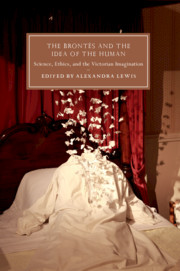Book contents
- The Brontës and the Idea of the Human
- Cambridge Studies in Nineteenth-Century Literature and Culture
- The Brontës and the Idea of the Human
- Copyright page
- Contents
- Figures
- Contributors
- Abbreviations
- Introduction Human Subjects
- Chapter 1 Hanging, Crushing, and Shooting
- Chapter 2 Learning to Imagine
- Chapter 3 Charlotte Brontë and the Science of the Imagination
- Chapter 4 Being Human
- Chapter 5 Charlotte Brontë and the Listening Reader
- Chapter 6 Burning Art and Political Resistance
- Chapter 7 Degraded Nature
- Chapter 8 ‘Angels … Recognize Our Innocence’
- Chapter 9 ‘A Strange Change Approaching’
- Chapter 10 ‘Surely Some Oracle Has Been with Me’
- Chapter 11 Jane Eyre, A Teaching Experiment
- Chapter 12 Fiction as Critique
- Chapter 13 We Are Three Sisters
- Bibliography
- Index
- Cambridge Studies in Nineteenth-Century Literature and Culture
Introduction - Human Subjects
Reimagining the Brontës for Twenty-First-Century Scholarship
Published online by Cambridge University Press: 22 May 2019
- The Brontës and the Idea of the Human
- Cambridge Studies in Nineteenth-Century Literature and Culture
- The Brontës and the Idea of the Human
- Copyright page
- Contents
- Figures
- Contributors
- Abbreviations
- Introduction Human Subjects
- Chapter 1 Hanging, Crushing, and Shooting
- Chapter 2 Learning to Imagine
- Chapter 3 Charlotte Brontë and the Science of the Imagination
- Chapter 4 Being Human
- Chapter 5 Charlotte Brontë and the Listening Reader
- Chapter 6 Burning Art and Political Resistance
- Chapter 7 Degraded Nature
- Chapter 8 ‘Angels … Recognize Our Innocence’
- Chapter 9 ‘A Strange Change Approaching’
- Chapter 10 ‘Surely Some Oracle Has Been with Me’
- Chapter 11 Jane Eyre, A Teaching Experiment
- Chapter 12 Fiction as Critique
- Chapter 13 We Are Three Sisters
- Bibliography
- Index
- Cambridge Studies in Nineteenth-Century Literature and Culture
Summary
The idea of the human received distinctive and complex treatment within the Brontës’ particular ethical and aesthetic visions. Alexandra Lewis identifies three key interlinked areas – science, psychology, and education; human rights, ethics, and religion; and creativity – where the imagination and the idea of the human intersect in the Brontës’ works. Lewis outlines why a re-evaluation of the Brontës’ writing along these lines is important for twenty-first-century scholarship in Victorian studies and literary theory (including the ‘post-human’) more broadly. The Introduction establishes how, for the Brontës, boundaries between the human animal, the non-human animal and even the shapes through which humans conceive of the spiritual and supernatural realms are often blurred. Pressing questions about what it meant to be human at a particular time and place in the nineteenth century were intricately connected with powers of memory and story-telling, gendered expectations, and the language of rights, responsibilities, and basic human needs. The reader of the Brontës’ works (and subsequent creative revisionings) is challenged by Lewis to consider how our twenty-first-century perspectives on the human and imagination might be informed by looking back to nineteenth-century works and the interpretive history they have engendered.
- Type
- Chapter
- Information
- The Brontës and the Idea of the HumanScience, Ethics, and the Victorian Imagination, pp. 1 - 26Publisher: Cambridge University PressPrint publication year: 2019

